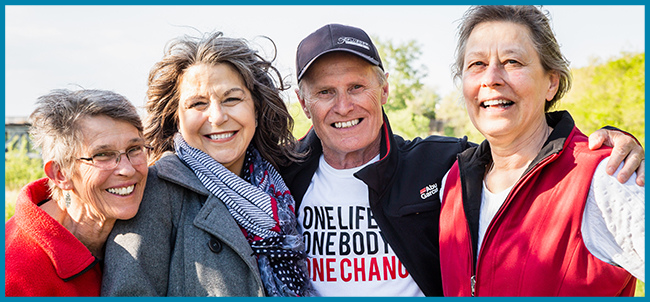Avoid Back To School Flare-ups
 Did you know September 17 has the highest number of asthma emergencies of the year, just a few weeks after school starts. Parents, teachers and students can all help avoid back to school flare-ups.
Did you know September 17 has the highest number of asthma emergencies of the year, just a few weeks after school starts. Parents, teachers and students can all help avoid back to school flare-ups.
Help Avoid the September Spike
As summer winds down, many start gearing up for the school year which usually means buying school supplies and long pants. But for students with asthma, getting ready for school should also include taking steps to protect themselves from asthma flare-ups and the “September Spike” – the sharp rise in asthma symptoms that happens soon after school begins.
What is to blame for the September Spike in asthma symptoms?
When youth go back to school, they are suddenly in close quarters with many others and with the germs and viruses, children carry. Viruses, including the common cold, are one of the main triggers (things that make asthma symptoms worse) for asthma symptoms in children. COVID-19 is also a concern. For those with asthma, especially uncontrolled asthma, viruses can lead to dangerous symptoms and unscheduled visits to the doctor or the emergency department.
Other triggers can also set off asthma in September. It is the peak season for ragweed, some pollens, dust, and moulds. It is also a time of higher stress. These are all common triggers for people with asthma.
School-age children are not the only ones affected by the September Spike. Children with colds often pass their germs on to other family members. Adults with asthma also have a spike in symptoms each September.
How parents can prepare for the September Spike?
- Ensure that your child takes their asthma controller medication throughout the year, as prescribed, even when not experiencing symptoms.
- Schedule regular asthma check-ups with your child's doctor to ensure their asthma is properly controlled. It’s especially important to have a checkup right before your child goes back to school.
- Make sure you refill or renew your child’s asthma medication prescription. Have a 30-day supply of medication on hand.
- Identify your child’s asthma triggers and teach them best practices on how to avoid them.
- Teach your child what to do in case an asthma attack occurs.
- Help your child understand their asthma, including teaching them how to use their medications properly. Review their inhaler technique.
- If your children are sick or exhibiting any symptoms of COVID-19, keep them home from school, and follow provincial healthcare guidelines.
- Teach your children ways to cope with anxiety, stress, and strong emotions as these can trigger an asthma flare-up.
- Ensure your child, and everyone in your household has received their influenza vaccinations.
- Ensure your child and everyone in your household has received a COVID-19 vaccinations and boosters as recommended by public health when they are available to you.
Special Considerations for COVID-19
During the COVID-19 pandemic, there will be new aspects of asthma management to consider. Children with asthma, may be at more risk of developing serious illness from COVID-19.
1. Teach and practice proper mask -wearing
Make sure your child knows how to wear their mask or face covering properly. It should cover both the nose and mouth. Masks should be changed daily. Make sure the mask is clean before wearing it. If the mask gets soiled or wet, be sure to wash and dry it before wearing it again. It may be a good idea to pack more than one mask, so they have a spare easily accessible during the school day.
Tips for wearing masks:
- Experiment with different types of mask materials and styles. Some masks may feel more comfortable or be more breathable.
- Teach your child to always put on and remove a mask with clean hands.
- Do not share masks.
- Help your children adjust by having them wear it around the house for 20 minutes so they can adjust to how it feels.
- There is not a recommended, “best mask” for people with asthma. Medical grade masks and/or N95 masks with a good fit and seal are most protective.
- Pack 1-2 spare masks in your child's backpack in case they become soiled or wet during the school day.
2. Teach and practice proper handwashing
It's important to teach your child the correct hand washing technique and the importance of frequent hand washing.
- Wet your hands with clean, running water (warm or cold), turn off the tap, and apply soap.
- Lather your hands by rubbing them together with the soap. Lather the backs of your hands, between your fingers, and...
- Scrub your hands for at least 20 seconds. Need a timer? Hum the “Happy Birthday” song from beginning to end twice.
- Rinse your hands well under clean, running water.
- Dry your hands using a clean towel or air dry them.
3. Get vaccinated and boosted
Vaccinations are one of the best ways to protecting everyone, especially those potentially at most risk (those with asthma) of developing serious disease from COVID-19. Certain vaccines and boosters for COVID-19 may be recommended for certain age groups. To protect everyone from COVID-19, make sure to get your vaccinations and boosters and your child’s vaccinations and boosters when they become available.
4. Follow public health guidelines
Public Health Guidelines are in place to protect you and everyone from the spread of COVID-19. All measures are important to help keep everyone safe.





